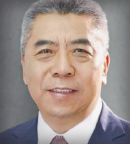The addition of the PD-1 inhibitor sintilimab to ICE (ifosfamide, carboplatin, and etoposide) chemotherapy appeared to significantly improve the complete remission rate and showed a trend toward improved progression-free survival in second-line classical Hodgkin lymphoma, according to Yuankai Shi, MD, PhD, of the National Cancer Center and Cancer Hospital and the Chinese Academy of Medical Sciences and Peking Union Medical College, Beijing. These results from the phase III ORIENT-21 trial were presented during the 2025 ASCO Annual Meeting.1
The PD-1 inhibitor nivolumab followed by nivolumab plus ICE, pembrolizumab plus GVD (gemcitabine, vinorelbine, and liposomal doxorubicin), and pembrolizumab plus ICE—each followed by autologous stem cell transplantation (ASCT)—are among the second-line treatment options that have shown efficacy in the United States.2-4 The Chinese ORIENT-21 trial provides cross-regional evidence that appears to further strengthen the rationale for combining PD-1 inhibition with chemotherapy in this setting.

Yuankai Shi, MD, PhD
Although not currently approved by the U.S. Food and Drug Administration (FDA) for any indication, sintilimab received conditional approval from the China National Medical Products Administration as monotherapy for the third-line and later treatment of classical Hodgkin lymphoma, based on results from the phase II ORIENT-1 trial.5 The present study, which is evaluating this agent in combination with ICE, explored its role in an earlier line.
Study Details
The multicenter, randomized, controlled, double-blind ORIENT-21 study enrolled patients with classical Hodgkin lymphoma who failed to respond to first-line standard combination chemotherapy and were ineligible for or refused ASCT. Following a safety run-in phase evaluating sintilimab in combination with ICE, patients were randomly assigned in a 1:1 ratio to receive six cycles of ICE plus either sintilimab or placebo. Those who did not experience disease progression proceeded to monotherapy with their assigned agent.
Progression-free survival was initially identified as the primary endpoint. However, “due to changes in the treatment landscape, patient enrollment for this study became highly challenging,” Dr. Shi explained. “Following discussions with the China National Medical Products Administration…, we adjusted the primary endpoint to the complete remission rate and proceeded with early unblinding for data analysis,” he said. Secondary endpoints included progression-free survival, duration of complete remission, and safety.
Analyses were conducted on the intention-to-treat (n = 81; patients from the safety run-in [n = 10] and randomization [n = 71]), modified intention-to-treat (n = 71; all randomly assigned patients), and safety (n = 80; all enrolled patients who received at least one dose of the study drug) populations. Follow-up data were provided for a median of 38.4 months.
Baseline characteristics were found to be balanced between the arms. More than half of patients had stage III or IV disease, and ABVD (doxorubicin, bleomycin, vinblastine, and dacarbazine) was the most common first-line chemotherapy regimen.
Key Results
The addition of sintilimab vs placebo to the ICE regimen yielded significantly higher complete remission rates in both the modified intention-to-treat (61.8% vs 32.4%; P = .0295) and intention-to-treat (61.4% vs 32.4%; P = .0105) populations. “In the intention-to-treat population, consistent benefits in the complete remission rate favoring sintilimab were also observed in most subgroups, including age, gender, relapsed or refractory, International Prognostic Score, Eastern Cooperative Oncology Group performance status, B symptoms, and clinical stage,” Dr. Shi commented.
Durable complete remissions were observed in both arms, he noted. The median duration of complete remission was not reached with sintilimab (events: 28.6% [modified intention-to-treat] and 22.2% [intention-to-treat]) and was 20.7 months with placebo. The 24-month rates were 70.8% and 40.0%, respectively.
In the intention-to-treat population, the regimen with sintilimab vs placebo showed a trend toward improved progression-free survival (median, not reached [events: 34.1%; median follow-up = 15.2 months] vs 9.0 months [median follow-up = 12.0 months]; hazard ratio [HR] = 0.48). Patients who achieved complete remission appeared to have more favorable progression-free survival than those who did not, both with sintilimab (HR = 0.22) and placebo (HR = 0.15).
“In general, sintilimab plus ICE did not increase additional safety risks compared with placebo plus ICE,” said Dr. Shi. Treatment-emergent adverse events of grade 3 or higher were reported in 81.4% of the sintilimab arm and 97.3% of the placebo arm; he noted that most were hematologic and consistent with those typically seen with ICE. No patients died as a result of treatment-emergent adverse events.
“Several limitations of our study should be noted,” Dr. Shi remarked. “The study was conducted in Chinese patients only,” he said. “Therefore, generalizability of the results to other populations should be interpreted with caution, considering differences in epidemiology and patients. [Additionally], only 81 patients were enrolled rather than the prior planned 230 patients, due to the patient enrollment for this study becoming highly challenging.”
The clinical benefits of sintilimab plus ICE should be evaluated through long-term follow-up to obtain mature duration of complete remission, progression-free survival, and overall survival data, as well as in studies with larger sample sizes, according to Dr. Shi. He also emphasized that evaluation of sintilimab in the first-line setting appears to be warranted.
DISCLOSURE: Dr. Shi reported no conflicts of interest. For full disclosures of the other study authors, visit coi.asco.org.
REFERENCES
1. Liu P, Li Z, Cen H, et al: Sintilimab (anti–PD-1) plus ifosfamide, carboplatin, and etoposide in second-line classical Hodgkin lymphoma: Results of a multicenter, randomized, controlled, double-blind phase 3 study (ORIENT-21). 2025 ASCO Annual Meeting. Abstract 7007. Presented May 30, 2025.
2. Mei M, Palmer J, Lee HJ, et al: Nivolumab plus ifosfamide, carboplatin, and etoposide are a highly effective first salvage regimen in high-risk relapsed/refractory Hodgkin lymphoma. Hemasphere 30:e70126, 2025.
3. Moskowitz AJ, Shah G, Schöder H, et al: Phase II trial of pembrolizumab plus gemcitabine, vinorelbine, and liposomal doxorubicin as second-line therapy for relapsed or refractory classical Hodgkin lymphoma. J Clin Oncol 39:3109-3117, 2021.
4. Bryan LJ, Casulo C, Allen PB, et al: Pembrolizumab added to ifosfamide, carboplatin, and etoposide chemotherapy for relapsed or refractory classic Hodgkin lymphoma: A multi-institutional phase 2 investigator-initiated nonrandomized clinical trial. JAMA Oncol 9:683-691, 2023.
5. Shi Y, Su H, Song Y, et al: Safety and activity of sintilimab in patients with relapsed or refractory classical Hodgkin lymphoma (ORIENT-1): A multicentre, single-arm, phase 2 trial. Lancet Haematol 6:e12-e19, 2019.
EXPERT POINT OF VIEW
“A PD-1 inhibitor plus ICE [ifosfamide, carboplatin, and etoposide] is an effective second-line regimen in patients with classical Hodgkin lymphoma,” commented invited discussant of the ORIENT-21 trial, Sarah C. Rutherford, MD, Associate Professor of Clinical Medicine, Weill Cornell Medicine, New York. During her presentation, she elaborated and put the findings from this trial of the FDA-unapproved PD-1 inhibitor sintilimab plus ICE into context for clinicians based in the United States.
“The standard of care for relapsed and refractory classical Hodgkin lymphoma in the second-line setting is ASCT [autologous stem cell transplantation] after initial treatment,” Dr. Rutherford said, “and second-line regimens are evolving in the era of novel agents.” They include the CD30-targeted antibody-drug conjugate brentuximab vedotin as well as the PD-1 inhibitors nivolumab, pembrolizumab, sintilimab, tislelizumab, and camrelizumab.

Sarah C. Rutherford, MD
In the United States, second-line treatment with certain PD-1 inhibitors, when combined with chemotherapy and followed by ASCT, has yielded progression-free survival rates of approximately 90%, according to Dr. Rutherford. “We have three primary regimens that we use—nivolumab followed by nivolumab plus ICE; pembrolizumab plus GVD [gemcitabine, vinorelbine, and liposomal doxorubicin]; and pembrolizumab plus ICE—and they have all been shown to be effective.”
A Closer Look at ORIENT-21
Regarding the design of ORIENT-21, Dr. Rutherford noted that it was larger than most recent U.S. trials and described its randomized approach as a “unique feature” and “difficult to conduct” in relapsed or refractory disease. The inclusion criterion focusing on ineligibility or refusal of ASCT, along with the median patient age of 33, made the trial “certainly different from what I think would have been the case in a U.S. trial.” She also highlighted that most patients were treated with ABVD (doxorubicin, bleomycin, vinblastine, and dacarbazine), and none had received prior brentuximab vedotin or checkpoint inhibitors.
The complete remission rate with sintilimab vs placebo in the intention-to-treat population was described by Dr. Rutherford as “striking,” but she acknowledged the short median durations of follow-up of 15.5 and 11.0 months, respectively. She furthermore noted that toxicities were “as expected,” emphasizing the low incidence of immune-related events (7% vs 3%).
Dr. Rutherford highlighted that “the strength of the study is that, to my knowledge, [it] is the first randomized study of a PD-1 inhibitor plus chemotherapy vs chemotherapy in the second-line setting in classical Hodgkin lymphoma.” However, she also acknowledged the study’s limitations: “ASCT was not included in the study design, and longer follow-up is certainly needed, especially to understand the impact of no ASCT; the importance of the specific PD-1 inhibitor is [also] unclear.”
“Currently…, the National Comprehensive Cancer Network [NCCN] Clinical Practice Guidelines in Oncology indicate that PD-1–containing regimens can be given in the second line for those who are unexposed or who relapse [at least] 3 months after receiving front-line checkpoint inhibitor [therapy],” Dr. Rutherford stated. Having previously noted that these regimens are often followed by ASCT, she shared these conclusions: “In the future, I think [the ORIENT-21 trial], along with [the trial] of Dr. [Alison] Moskowitz [on pembrolizumab maintenance therapy instead of ASCT for patients in complete remission after pembrolizumab plus GVD], may provide data for an ASCT-free approach in some patients in the second-line setting for classical Hodgkin lymphoma.”
DISCLOSURE: Dr. Rutherford has received honoraria from Aptitude Medical, BioAscent, Curio Science, HMP, i3 Health, IDEOlogy Health, Imedex, Physicians’ Education Resource, Plexus, and Prime Oncology; has served as a consultant or advisor to AbbVie, ADC Therapeutics, Bristol Myers Squibb, Genmab, Incyte, Karyopharm Therapeutics, Kite (a Gilead company), Pfizer, and Seagan; and has received research funding from Constellation Pharmaceuticals, Genentech, Karyopharm Therapeutics, and Roche/Genentech.

